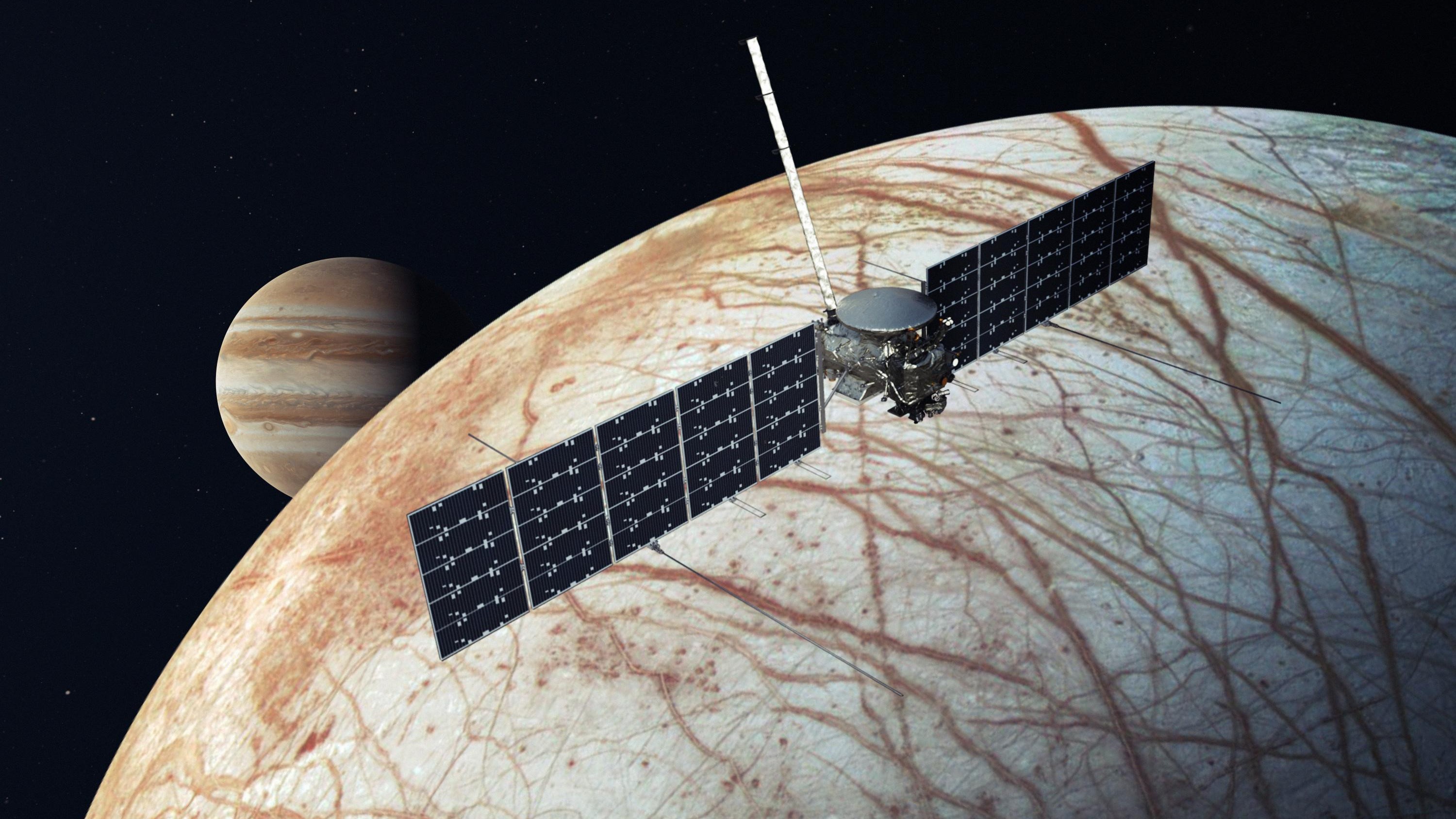NASA's Europa Clipper may crash into Ganymede, the largest moon in the solar system, at mission's end
The spacecraft's demise may even become an experiment in itself.

Deep-space missions are usually one-way trips, and that's certainly true of NASA's upcoming Europa Clipper mission, which, after investigating the potential habitability of the icy Jovian moon, will end in an intentional crash.
But rather than plunging into Jupiter as had previously been planned, the spacecraft may now crash into Ganymede or Callisto, two of Jupiter's Galilean moons, Europa Clipper mission project scientist Bob Pappalardo said at a June 15 meeting of the Outer Planets Assessment Group (OPAG).
"The disposal target … had been Jupiter, but it saves propellant, it's more efficient, if we go into either Ganymede or Callisto instead as our disposal target," Pappalardo said during the meeting.
Related: Stunning photos of crescent Jupiter and its moon Ganymede
The change in the disposal site is one of several budget-saving measures taken in the most recent design of Europa Clipper's timeline. Another is the reduction of the spacecraft's Europa flybys from 53 to 49, barring any mission extensions.
Of the two moons up for contention, Ganymede — the largest moon in the solar system — is the front-runner because of its potential science implications. "Impacting Ganymede instead of Callisto — or, for that matter, Jupiter — has the added benefit of the potential for synergistic science with JUICE," Pappalardo said, referring to the European Space Agency's Jupiter Icy Moons Explorer mission, which is scheduled to launch in 2023. The mission will study all three icy Galilean moons, with Ganymede as its primary target.
"If the JUICE mission is still in orbit of Ganymede at the time of Clipper disposal, there is the potential for JUICE instruments to watch that impact and learn about properties of Ganymede that way," Pappalardo said.
Get the Space.com Newsletter
Breaking space news, the latest updates on rocket launches, skywatching events and more!
Europa Clipper will not be the first spacecraft in the Jupiter system to be intentionally destroyed at mission's end. In 2003, NASA's Galileo spacecraft was directed to plunge into Jupiter due to the risk of it crashing into Europa, which, the mission had discovered, might have the right conditions to support life. Once the spacecraft became uncontrollable after running out of fuel, it could have inadvertently crashed into Europa, thus contaminating the moon and any potential life-forms on it.
Since then, numerous spacecraft have been intentionally destroyed, either by impact or disintegration in an atmosphere, often to protect potentially life-supporting environments. In other cases, the violent demise of a spacecraft was a science-gathering part of the mission, such as NASA's Deep Impact, which struck a comet so scientists could study its composition.
Europa Clipper belongs to the former category; its intentional crash into Ganymede or Callisto is designed to protect Europa, a more fragile moon. Like Europa, Ganymede is thought to have a subsurface ocean, which means it could have the ingredients to support life as we know it. However, the mission team worked with NASA's Planetary Protection division to determine that the risk of the spacecraft contaminating this body of water was minimal due to the thickness of Ganymede's icy shell, stagnant lid and lithosphere, Pappalardo said.
Still, as Europa Clipper investigates the Jovian system, the spacecraft's disposal site might change again based on new information. But for now, it looks like Ganymede might see a big impact.
Follow Stefanie Waldek on Twitter @StefanieWaldek. Follow us on Twitter @Spacedotcom and on Facebook.
Join our Space Forums to keep talking space on the latest missions, night sky and more! And if you have a news tip, correction or comment, let us know at: community@space.com.

Space.com contributing writer Stefanie Waldek is a self-taught space nerd and aviation geek who is passionate about all things spaceflight and astronomy. With a background in travel and design journalism, as well as a Bachelor of Arts degree from New York University, she specializes in the budding space tourism industry and Earth-based astrotourism. In her free time, you can find her watching rocket launches or looking up at the stars, wondering what is out there. Learn more about her work at www.stefaniewaldek.com.









